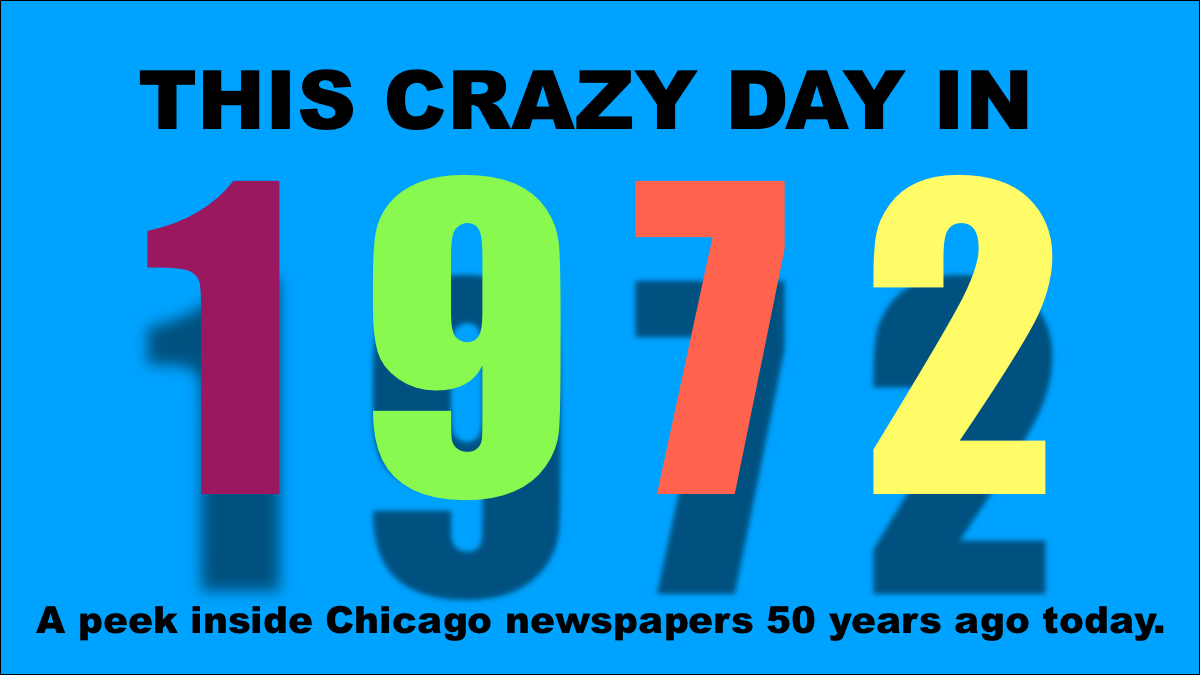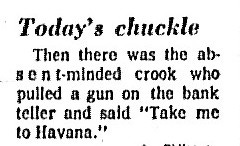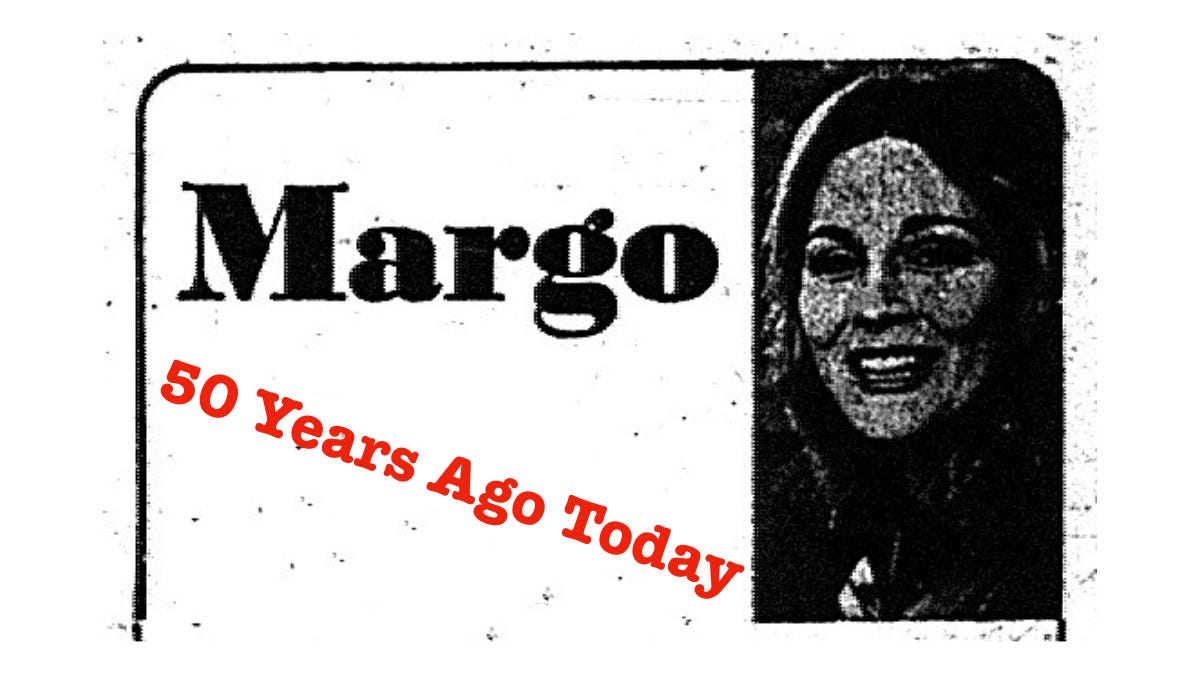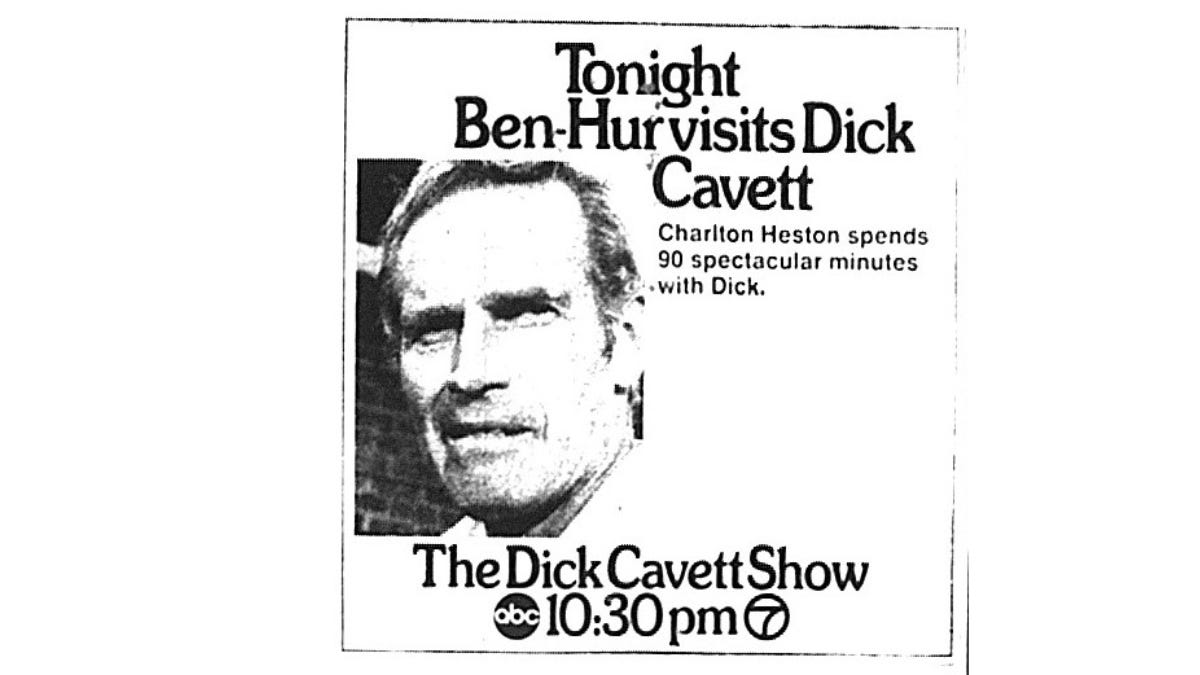THIS CRAZY DAY IN 1972: C. Oran Mensik is the nuttiest crooked banker you've never heard of
October 11-17, 1971
To access all site contents, click HERE.
Why do we run this separate item peeking into newspapers from 1972? Because 1972 was part of the ancient times when everybody read a paper. Everybody, everybody, everybody—even kids. So Steve Bertolucci, the 10-year-old hero of the novel serialized at this Substack, read the paper too—sometimes just to have something to do. These are some of the stories he read. If you’d like, keep up with the 1972 papers every day on Twitter, @RoselandChi1972.
October 11, 1971
Chicago Daily Defender: Westside couple burned from home by ‘maniac’
The Defender reported in an unbylined story that Mrs. Annie L. Prince and her husband Isom would not move back to their three-flat at 3704 W. Lexington following repairs after a firebomb was thrown through their kitchen window in the middle of the night on Sept. 9.
Most of the Prince’s first floor was gutted, “and Mr. and Mrs. Prince barely escaped with their lives.” They bought the building in 1960, Mrs. Prince told the Defender, and had no trouble until the previous three years, when they began receiving threatening phone calls that had escalated recently.
The Princes were African-American. The calls all came from the same unknown man, presumably white. “He said he would do us the same as they did Martin Luther King,” Mrs. Prince told the Defender. “He said he would bring a bulldozer and knock our home down.”
“We worked awful hard to get that house,” she said, “and we never did anything to hurt anybody. Whoever’s got it in for us must be out of his head. He sure sounded crazy.”
Lexington is two blocks south of Harrison, and the Prince’s building at 3704 West was just east of Independence Boulevard. Today’s Google map calls this Homan Square, though the Chicago neighborhood map simply includes it within the larger neighborhood of Lawndale.
Today the Prince’s three-flat is gone, replaced by a block of what looks like new very skinny brick townhouses.
Bonus peek at stories I didn’t have time to post for October 11:
Chicago Daily News The Bee Line column helped M.P. of River Forest, a railroad model buff who wanted to make the most authentic possible recreation of the “La Salle Street railroad station.” M.P. meant a gorgeous station built in 1903, torn down in 1981. Per the terrific Chicagology website, this was the station where Cary Grant and Eva Marie Saint evade police in North by Northwest.
“This was no problem at all,” said ever-cheerful Bee Line. “All that was necessary was to find the special engineering number of ‘The Railway Age’ magazine, for March 20, 1903.”
Chicago Daily News “Biggest Columbus parade here,” by Edward H. Eulenberg: “The largest Columbus Day parade in Chicago’s history stepped off in brisk weather Monday with a beaming Mayor Richard J. Daley and an 18-year-old Christopher Columbus leading the thousands of marchers….The brisk weather caused to shiver in their short dresses (sic—they left out a few words here, presumably something about young women) and made the mayor’s pink cheeks pinker than usual.”
Chicago Daily News “Jesus people rally to ‘save’ Daley,” by James H. Bowman: “A group of ‘Jesus people’ declaring that ‘what Mayor Daley needs is to be saved,’ Monday announced a series of rallies, a love feast and a mass baptism to combat sin in Chicago.”
October 12, 1971
Chicago Daily News: City to save entry arch of Old Exchange
By Jay McMullen—which many readers will recognize as the name of Mayor Jane Byrne’s husband, in his initial iteration as a City Hall reporter.
In this ongoing saga, Mayor Daley finally announces the city will “attempt to preserve” a few parts of the Stock Exchange, 30 N. La Salle. Daley claimed the city “had contacted more than 20 real estate developers” about trying to renovate the building.
Building Commissioner Joseph Fitzgerald denied charges from Richard Miller, president of Landmarks Preservation, that the city should have revoked the wrecking permit it issued to 3 Oaks Wrecking company, because Three Oaks failed to give the required 24-hour notice before starting the job.
October 12, 1971
Chicago Daily News: Today’s Chuckle
A charming feature of this era in the Daily News: they actually ran a stupid joke every day on the front page. These definitely fall under the category “so bad you have to laugh anyway.” Also sexist more often than not.
October 12, 1971
Chicago Daily News: Margo column—Once Upon a Couch
Daily News columnist Margo analyzed a recent Association for Humanistic Psychology meeting where members asked, “Should a professional psychotherapist go to bed with his or her patient if mutually attracted?”
You’ll never guess their answer if you weren’t around in 1972.
Margo notes the association didn’t pass an official resolution, but participants talked freely, right there in person, about having sex with patients. This being 1972, the doctors were all men, and the patients were all women. “One doctor sanctioned the patient AND the therapist on the couch as being ‘an important human contact,’” wrote Margo.
“This would seem to indicate that in some quarters at least, free association is getting a lot freer,” Margo quipped.
You know, I’m thinking Margo is a severely under appreciated past Chicago columnist. I’m happy to have the space here to showcase her work. Thanks Margo! @Margoandhow
Maybe I should end this with a different logo.
October 13, 1971
Chicago Daily Defender editorial: Black Catholics at Vatican
The Defender editorial board hoped a meeting in Rome between a National Black Catholic Lay Caucus and Archbishop Giovanni Benelli would yield some results-- ”a black Archbishop for the District of Columbia,” “a special black rite, and black American representation in the Roman curia”.
The Defender reports that the caucus president told Archbishop Benelli “that the American bishops have been ‘lying’ to the Vatican about the situation of black Catholics in the United States.”
The Defender said the caucus would meet with the Pope, and a positive reaction was crucial: “It is a challenge which the Holy See must meet and meet squarely if it intends to retain the faith of black Catholics, not only in the United States but in the entire black world.”
October 13, 1971
Chicago Daily News: Project: Pole plans ad war on Polish Jokes
by Henry Hanson
Philadelphia millionaire Edward J. Piszek, president of Mrs. Paul’s Kitchens, Inc., bankrolled an advertising campaign against then-ubiquitous Polish jokes with $500,000. That’s $3,280,000 in 2021 money.
A stupid waste of money, or a smart insight that allowing your ethnic group to become a national joke was a bad idea? I’ll go with the latter, especially if you have money to spare.
“Polish jokes should set up in a man a determination to prove they’re not true,” said Piszek.
Henry J. Dende, editor and publisher of the national Polish-American Journal, said the Polish joke phenomenon was about three or four years old, and “the opposition now stems partly from the successful black revolution.”
“I watched a television program the other night and the phrase ‘dumb Polack’ was used seven times,” said Dende. “I counted them. I don’t mind an ethnic joke now and then, but why do they have to beat us over the head with it?”
Probably the answer to Mr. Dende’s question is that Archie Bunker really, really detested his son-in-law, Mike Stivic.
October 13, 1971
Chicago Sun-Times: Old Stock Exchange continues to crumble as words fly
By Rob Cuscaden, Sun-Times Architecture Critic
Landmarks Preservation Council president Richard Miller continued leading a fight to revoke the wrecking permit for Adler & Sullivan’s Old Stock Exchange Building, while Three Oaks Wrecking Co. busily stripped out pipes and other valuable materials.
Since he couldn’t get city building commissioner Joseph Fitzgerald on the phone, Miller finally sent a telegram. This probably surprises even those of us alive in 1972, but yes, there were still telegrams in 1972.
One of Miller’s arguments for revoking the permit was that the Commission on Chicago Historical and Architectural Landmarks recommendation to landmark the building still hadn’t even been considered by the Chicago City Council.
“They’ll have to take that up with the City Council,” said Fitzgerald. The picture with this Sun-Times story shows a demolition worker “striding through the old trading room” and “passing rubble that once was an ornamental cornice”.
October 14, 1971
The Daily Defender: A black Judas?...
This is a big captioned picture of the stars of “Jesus Christ Superstar” in a group hug following their opening performance at the Mark Hellinger Theatre on Broadway--Ben Vereen (Judas), Jeff Fenholt (Jesus) and Yvonne Elliman (Mary Magdalene).
Since there is no question that Ben Vereen played Judas on Broadway, or that Ben Vereen is Black, the question is why there was a question mark in the headline. No idea.
I couldn’t resist including this, because Jesus Christ Superstar was so ubiquitous in Steve’s 1972 Catholic world. Steve’s mom bought the album during a trip to Polk Brothers for a washing machine, hoping his dad wouldn’t notice the extra $7.19 tacked onto the price of a major appliance. He did notice, because $7.19 was a lot of money in 1972—it was almost $48! Records were already expensive, and Jesus Christ Superstar was a giant two-record set with a special booklet. Mrs. Bertolucci felt the record was part of the children’s religious education, and told Mr. Bertolucci it was staying. Mr. Bertolucci thought they had already spent enough money on tuition at St. Anthony of Padua school, but wisely let it go.
October 14, 1971
Chicago Daily News: Ad urges Public Rally to Save Old Exchange
In the continuing saga of the destruction of Adler & Sullivan’s masterpiece Old Stock Exchange at 30 N. La Salle, the Landmarks Preservation Council purchased full-page ads in Chicago newspapers.
The ad described a new plan to save the building by having a governmental entity buy and restore it, and urged readers to write President Nixon, Illinois Gov. Richard Ogilvie and Mayor Daley about saving the Exchange.
Also, the Landmarks Council filed a lawsuit to stop demolition, citing the fact that the Chicago Landmarks Commission had recommended landmark status for the Stock Exchange to Chicago City Council on both Feb. 24, 1970 and June 3, 1971—but the recommendations were sent to committee and ignored.
Wow. Even for Chicago City Council, even for Chicago City Council under Mayor Richard J. Daley, just wow.
Here is a photo of the building, courtesy of the Cornell University Library.
Chicago Daily News: Today’s Chuckle
Let’s remember this regular item appeared on the front page. The front page.
October 15, 1971
Chicago Sun-Times: Ad for The Dick Cavett Show
Charlton Heston seemed to be everywhere, like God to 10-year-old Steve Bertolucci in 1972. But Charlton Heston was not God—he was Moses and Ben-Hur, as the advertising agency for the Dick Cavett Show understood very well.
Chicago Sun-Times: Full Page Ad—The Old Stock Exchange Building is not dead
The Landmarks Preservation Council ran a full-page ad in the Sun-Times this day begging the public to write everyone from President Nixon to Mayor Daley to save Adler & Sullivan’s classic Old Stock Exchange Building.
The architectural masterpiece was already in the process of being demolished. The ad proposes a scheme to have a government entity buy the building and rehab it.
And the ad is, of course, utterly heartbreaking to read. Especially now, knowing as we do that it never had a chance. Another astonishing point about this ad: It is not only a full page, but a full page crammed with type. They really expected people would read such a thing.
One money quote from among so many:
“Most cities around the world would love to have a Sullivan building in use and on display. But most of his buildings were built in Chicago. (Which is one of the reasons why we’re so famous as the home of the ‘Chicago School’ of architecture.).
Yet somehow, with our permission, Chicago has torn down more Sullivan architecture than the rest of the world ever even had.”
In the exact same issue, the Sun-Times ran another story with the headline “Monadnock Bldg. owner to fight landmark label.” Amazingly, the Monadnock Building is still there at 53 W. Jackson. I know I’ll appreciate it even more myself after reading that headline from 1971.
October 16, 1971
Chicago Daily News: Mensik just took a walk—to freedom
By Barry Felcher
How was there *not* a made-for-TV movie about C. Oran Mensik, as we used to call cheapo films made quickly out of current events for television rather than the movie theater? He’s the uber criminal hiding in plain sight as an inoffensive quiet guy—think Kevin Spacey in The Usual Suspects.
“I can’t remember anything about him,” said the bewildered head of the tiny minimum-security federal prison farm from which Mensik escaped. Mensik had finagled the transfer there after acting the part of a model prisoner in a maximum-security prison.
Daily News reporter Barry Felcher writes the heck out of this short but front page story: “Affable Chicago swindler C. Oran Mensik strolled through a tiny Pennsylvania prison town in his prison uniform, hailed a taxi—and did not arouse suspicion.”
The background: Oran Mensik operated City Savings Association at 1656 W. Chicago, and his ability to look like a character on The Andy Griffith Show persuaded people—mostly hardworking blue collar folks--to trust him with their money even though they knew he didn’t carry federal deposit insurance.
So when City Savings went belly up in 1964, the depositors lost every penny of the $28 million in deposits ($183,680,000 in 2021 money). Mensik lost his freedom, though he was in prison for a separate mail-fraud scheme in Maryland. He got five years for the fraud, and another five years for fleeing to Canada and Europe while out on bond.
The FBI said Mensik hailed a cab in his obvious prison garb, “and persuaded the driver to take him to the nearby Williamsport Airport, where he caught a flight to Pittsburgh. There, he melted into the crowd and the FBI has been unable to trace him.”
###
Do you dig spending some time in 1972? If you came to THIS CRAZY DAY IN 1972 from social media, you may not know it’s part of the book being serialized here, one chapter per month: “Roseland, Chicago: 1972.” It’s the story of Steve Bertolucci, 10-year-old Roselander in 1972, and what becomes of him. Check it out here.




















